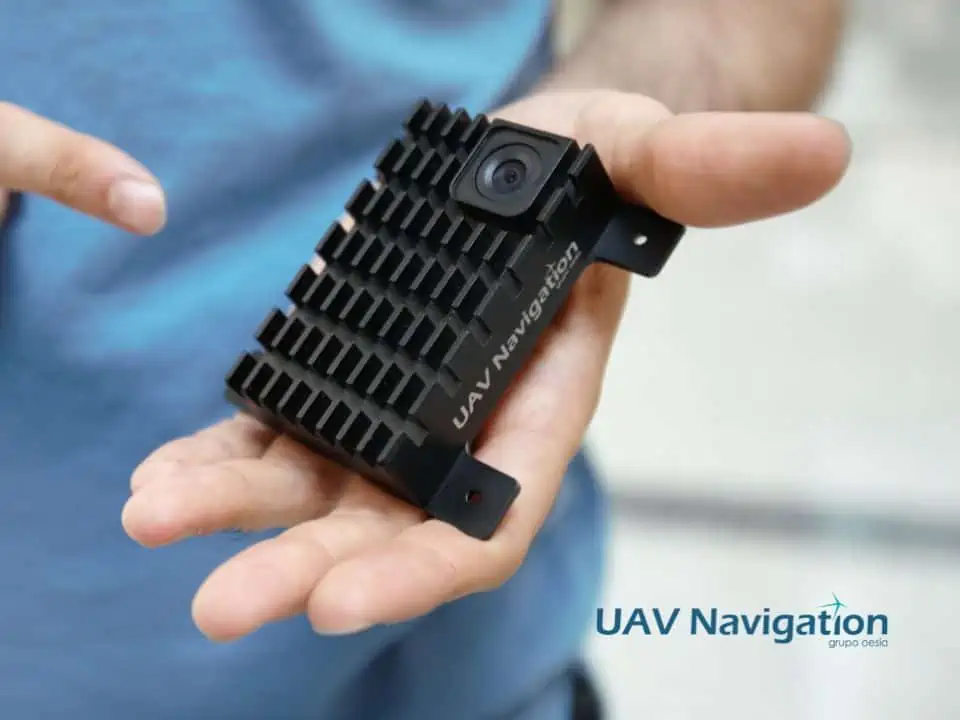



UAV Navigation, part of the Oesía Group, has released its new Visual Navigation System (VNS) for manufacturers and end users of NATO Category I and II Unmanned Aerial Systems (UAS).
The compact and lightweight device is provided as an optional peripheral to the main Flight Control System (FCS), enabling the safe and efficient navigation of Unmanned Aerial Vehicles (UAVs) in GNSS-denied environments.
The VNS combines ‘visual odometry’ techniques and ‘pattern identification’ with the rest of the sensors onboard the aircraft to ensure that the absolute position, orientation and relative movement of the aircraft over the ground is calculated with high accuracy.
According to UAV Navigation, the planning and execution of UAV missions in environments in which the GNSS signal is either unavailable or unreliable is becoming more and more critical. For some missions, the datalink to the Ground Control Station (GCS) may be subject to interference, or the operation dictates that the flight must be performed without a datalink from the outset. Under these circumstances, UAS traditionally rely on an Inertial Navigation System (INS) to complete the mission. However, such inertial systems accumulate navigational drift due to sensor noise, propagation models and the difficulty in characterizing external forces. This positional error may limit any such UAS operation as an accurate position cannot be guaranteed.
The new VNS, combined with the VECTOR range of flight control systems, can help to address this problem by using data which is independent of the GNSS constellation and which is more accurate than INS. The system identifies patterns in the terrain below in order to assist in canceling out any accumulated error, thereby allowing the UAS to operate for long periods of time without losing positional precision. In addition, thanks to its reduced size and weight, it can be installed in Category I and II UAS, enabling them to take advantage of this navigation technique without penalizing autonomy or payload capacity.
According to the company, the UAV Navigation VNS has produced outstanding results during flight testing, both on fixed-wing platforms, typically with higher airspeeds and greater service ceiling and also rotary wing platforms, where high vibrations and hover maneuvers are typically a problem. The new VNS has proved its ability to provide accurate navigational information for flights where there may be an intermittent loss of GNSS signal and also when a flight must be executed from the outset without GNSS data.
Find suppliers & manufacturers of Control & Navigation Systems for UAS >>





Related Posts
New Drone Fires Thales Missile in Unmanned Air Combat Milestone
UAS Startup Accelerator Awards 3M in Funding
US Navy Orders Unmanned Tactical Resupply Aircraft